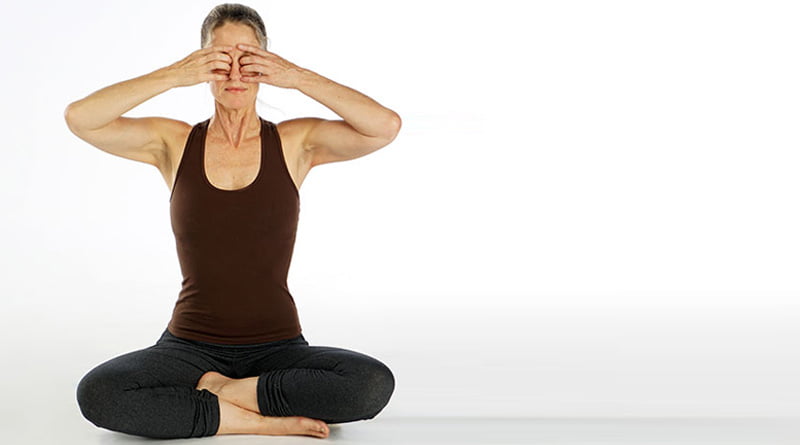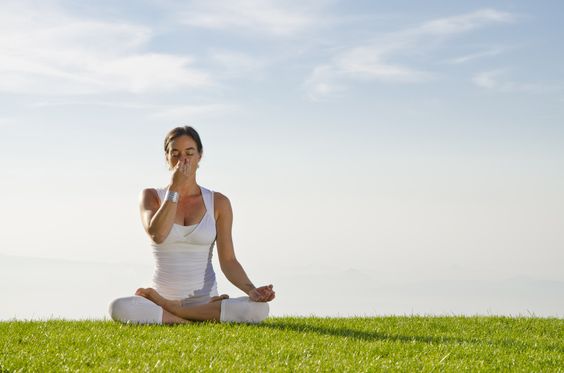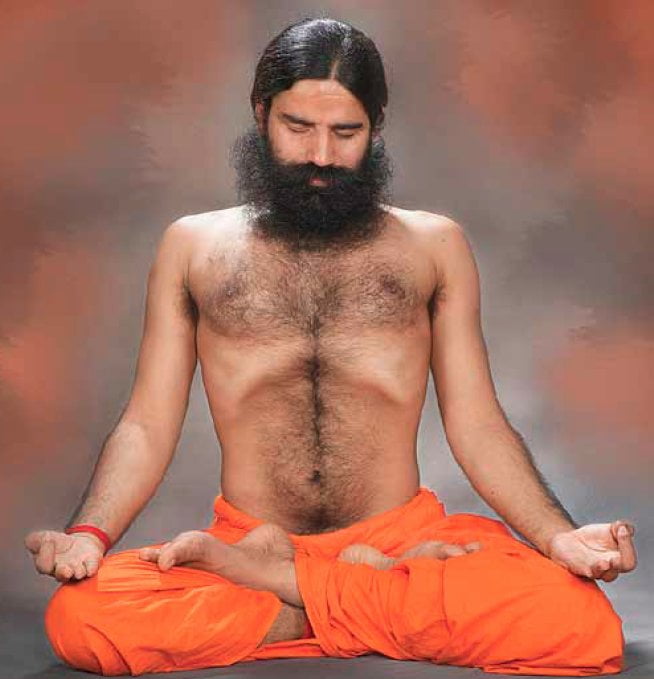Chandra Bhedana Pranayama, also known as “Left Nostril Breathing,” is a traditional yogic breathing technique that is part of the ancient science of Pranayama. This practice focuses on activating the Ida Nadi, the left energy channel in the body, which is associated with lunar energy, calmness, cooling effects, and mental relaxation. “Chandra” means “moon,” and “Bhedana” means “piercing” or “passing through,” indicating the dominance of inhalation through the left nostril to stimulate the lunar energies within the body and mind.
What Is Chandra Bhedana Pranayama?
Chandra Bhedana Pranayama is a classical yogic breathing technique that emphasizes inhaling through the left nostril (associated with the Ida Nadi or lunar channel) and exhaling through the right nostril (associated with the Pingala Nadi or solar channel). In Sanskrit:
- “Chandra” means moon
- “Bhedana” means piercing or passing through
- “Pranayama” means control of life force (prana) through breath regulation
So, Chandra Bhedana Pranayama means moon-piercing breath control, referring to the activation of cooling, calming, and introspective energies.
In yoga, the breath is considered a bridge between the body and mind. Chandra Bhedana is designed to:
- Activate the Ida Nadi, which governs the parasympathetic nervous system (calm and rest response)
- Cool down the body and mind
- Balance excess heat or stress, both physically and emotionally
- Prepare for meditation and deep relaxation
Table of Contents
The Philosophy and Energetics Behind Chandra Bhedana:
In yogic physiology, the body has three primary Nadis or energy channels:
-
Ida Nadi (left side): Associated with the moon, cooling, femininity, and the parasympathetic nervous system.
-
Pingala Nadi (right side): Associated with the sun, heat, masculinity, and the sympathetic nervous system.
-
Sushumna Nadi (center): The central channel for spiritual awakening.
Chandra Bhedana specifically activates the Ida Nadi, promoting a sense of peace, relaxation, and introspection, and counterbalancing the hyperactivity that may arise from an overstimulated Pingala Nadi.
How to Practice Chandra Bhedana Pranayama:
Here I am giving the steps on how to practice Chandra Bhedana Pranayama…
Step 1:
Choose a clean, quiet space. Sit in a comfortable meditative posture like Padmasana, Sukhasana, or Vajrasana. Keep the spine erect and shoulders relaxed. Close your eyes and focus inward.
Step 2:
Fold the index and middle fingers. Use the thumb to close the right nostril. Use the ring and little fingers to close the left nostril as needed.
Step 3:
Close your right nostril with your thumb. Inhale slowly and deeply through the left nostril, filling your lungs.
Step 4:
Close your left nostril with your ring and little fingers. Exhale slowly and completely through the right nostril.
Step 5:
Perform 10–15 rounds or 5–10 minutes based on your comfort and experience. Always begin with inhalation through the left and end with exhalation through the right.
Benefits of Chandra Bhedana Pranayama:
Chandra Bhedana Pranayama is a powerful yet gentle breathing technique in yoga that brings a variety of physical, mental, and energetic benefits. It focuses on stimulating the Ida Nadi (the left energy channel), which is associated with lunar energy — calming, cooling, and introspective in nature.
Cooling the Body:
Helps reduce body heat and is especially beneficial during hot weather or after intense activity.
Balances the Nervous System:
Activates the parasympathetic nervous system, promoting the body’s natural “rest and digest” state.
Supports Blood Pressure Control:
Assists in lowering high blood pressure by calming the sympathetic (fight-or-flight) response.
Improves Digestion:
Aids in balancing digestive fire (Agni) when it’s too strong, reducing issues like hyperacidity.
Relieves Headaches and Tension:
Effective for tension headaches, especially those caused by stress or heat.
Mental and Emotional Benefits:
Reduces stress, anxiety, and mental agitation. Induces calmness and enhances mental clarity. Supports better sleep and alleviates insomnia. Balances overactive thoughts and promotes inner peace.
Physiological Benefits:
A lower body temperature is ideal in hot climates or during summer. Enhances the function of the parasympathetic nervous system, aiding rest and digestion.
Helps manage high blood pressure by reducing sympathetic nervous activity. Aids in controlling hyperacidity and improves digestion.
Energetic and Spiritual Benefits:
Activates the Ida Nadi, promoting lunar (yin) qualities like receptivity and intuition. Prepares the mind and body for meditation. Balances masculine and feminine energies within the body.
Reduces Stress and Anxiety:
Brings about a sense of deep mental calm, easing racing thoughts and anxiety.
Enhances Focus and Concentration:
By calming the mind, it improves mental clarity and supports meditative states.
Improves Sleep Quality:
Promotes relaxation and is highly effective for people suffering from insomnia.
Balances Emotional Energy:
Helps manage emotional overactivity, making you feel more centered and grounded.
Precautions and Contraindications Of Chandra Bhedana Pranayama:
The precautions of doing Chandra Bhedana Pranayama are…
- It should not be practiced in cold weather or if you’re already feeling cold internally.
- Avoid if you have low blood pressure, depression, or conditions involving excessive lethargy.
- Pregnant women should consult a healthcare provider before practicing.
- Beginners should learn under the guidance of a qualified yoga teacher.
- Do not force the breath; always breathe gently and rhythmically.
Best Time To Practice Chandra Bhedana Pranayama:
- Best practiced in the evening or before bedtime, as it promotes relaxation.
- Practice on an empty stomach or after at least 3 hours of eating.
- Regular practice, even for 5–10 minutes, can yield significant benefits over time.
Conclusion:
Chandra Bhedana Pranayama is a subtle yet powerful technique that offers many benefits, from mental calmness to physiological balance and spiritual readiness. In a world that often overemphasizes action and speed (Pingala), Chandra Bhedana offers a much-needed gateway to stillness, introspection, and healing. Whether you’re a seasoned yogi or a beginner exploring pranayama, integrating this practice into your routine can help you cultivate harmony and holistic well-being.
FAQ:
Q. What is the main purpose of Chandra Bhedana Pranayama?
A. The main goal is to activate the Ida Nadi, which is associated with the moon (Chandra), promoting calmness, cooling, and mental relaxation. It balances the overactivity of the mind and the nervous system.
Q. How is Chandra Bhedana different from other Pranayama techniques?
A. Unlike alternate nostril breathing (Nadi Shodhana), Chandra Bhedana involves inhaling only through the left nostril and exhaling through the right, emphasizing cooling and calming energy. It does not alternate nostrils during inhalation.
Q. When is the best time to practice Chandra Bhedana?
A.
-
Evening or night, especially before bedtime, is ideal because it helps calm the mind.
-
It can also be practiced during times of high stress, hot weather, or when feeling overstimulated.
Q. How long should I practice Chandra Bhedana daily?
A. Beginners can start with 5 minutes a day and gradually increase to 10–15 minutes, depending on comfort. Always listen to your body and avoid overexertion.
Q. Can I practice Chandra Bhedana if I have a cold or sinus issues?
A. It’s not recommended during active colds, nasal congestion, or sinus infections, as it can be uncomfortable or ineffective due to blocked nostrils.
Q. Is it okay to hold the breath during Chandra Bhedana?
A. Breath retention (kumbhaka) is not required for beginners. Advanced practitioners may incorporate it under the guidance of a qualified teacher. Improper retention can cause dizziness or discomfort.
Q. Can Chandra Bhedana help with anxiety and insomnia?
A. Yes. It activates the parasympathetic nervous system, reducing stress and promoting deep relaxation. Many practitioners find it helpful for calming anxiety and improving sleep quality.
Q. Are there any side effects of Chandra Bhedana?
A. When practiced correctly, it is generally safe. However, overdoing it can lead to lethargy, sluggishness, or coldness in the body. People with low blood pressure or chronic depression should avoid or limit the practice.
Q. Can children or the elderly do Chandra Bhedana?
A. Yes, it is a gentle technique and safe for most age groups. However, it should be done under supervision and for short durations, especially in the beginning.
Q. What should I avoid after doing Chandra Bhedana?
A. Avoid jumping into physically intense activity or eating immediately after practice. Give your body a few minutes to settle and absorb the effects.





